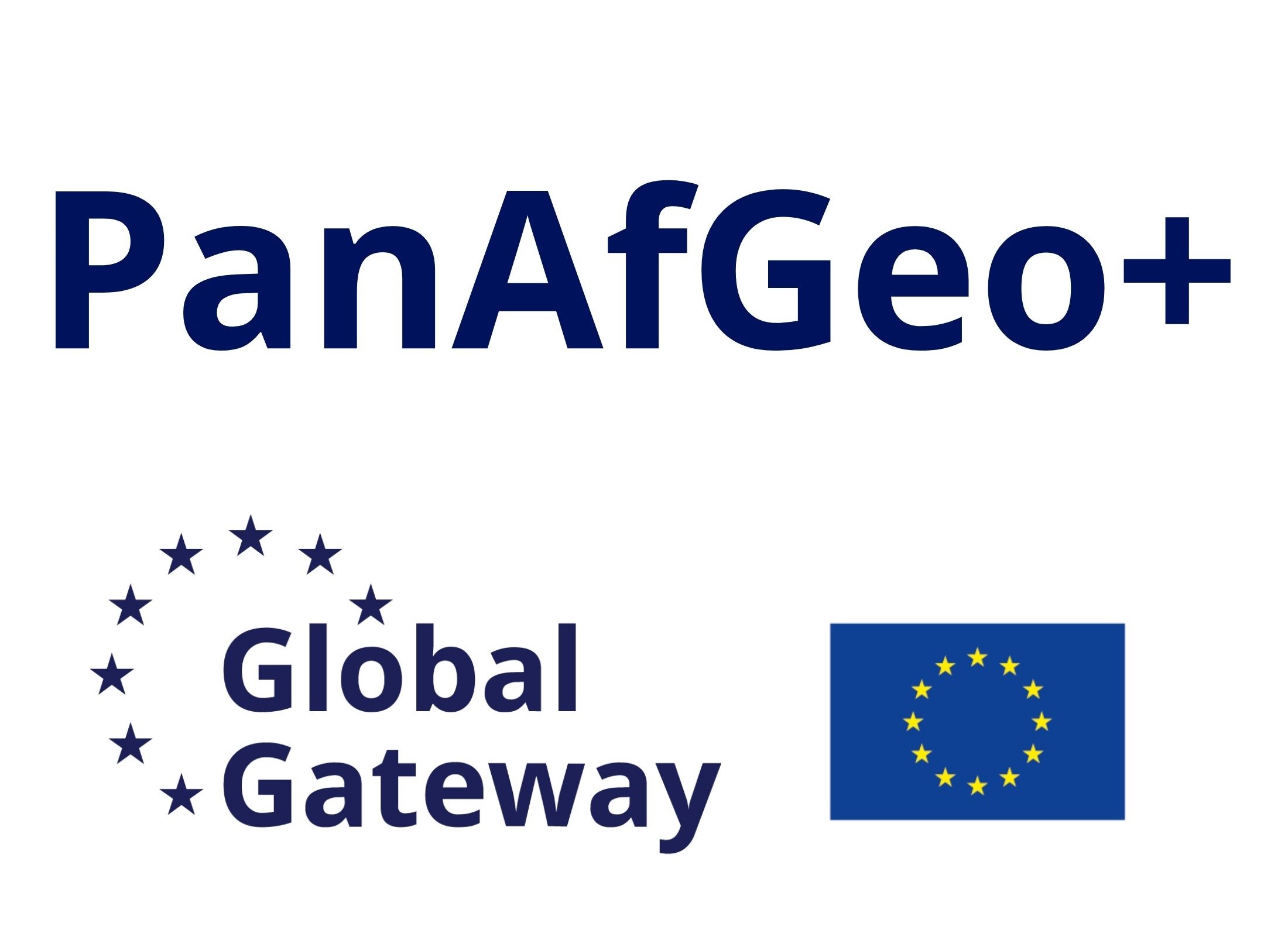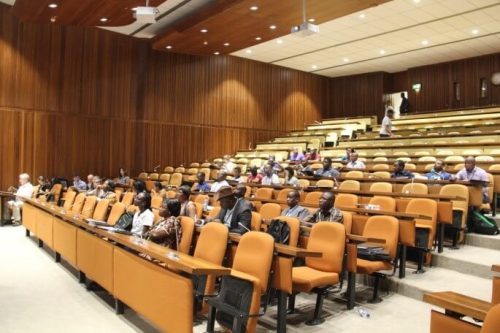Geoheritage
Session WP6-3: Windhoek, Namibia
29 October – 3 November, 2018
Brief description of the course content and visited places
Venue: Premises of the Geological Survey of Namibia (GSN), Windhoek, capital of Namibia
Coordinator of WP6: Enrique Díaz-Martínez, Geological Survey of Spain (IGME).
Co-Coordinators of WP6-3: Kombada Mhopjeni and Helcke Mocke, Geological Survey of Namibia (GSN).
The third session of Work-Package 6 on Geoheritage, a 6-day training programme on geoconservation provided by the PanAfGeo project, was held in Windhoek, Namibia, from 29th October to 3rd November 2018. There were 35 applications received and carefully examined before the course, and 29 of them were approved and selected. The final list of trainees included personnel from the geological surveys of 10 African countries, as well as professionals from two Namibian government organizations: the Namibia National Commission for UNESCO (under the Ministry of Higher Education, Training and Innovation), and the Namibian National Heritage Commission. The training team included staff from the Geological Survey of Namibia (GSN), the Geological Survey of Spain (IGME), the other aforementioned Namibian government organizations, and from a mining company.
The welcoming address at the opening ceremony was given by Anna Nguno, acting in place of the CEO of the GSN, followed by introductory lectures by Enrique Díaz-Martínez, WP6 leader. A comprehensive overview of the geology and geoheritage of Namibia was provided by Alfeus Moses and Jason Indongo, of the GSN.
During the training, lectures and presentations of case studies were given, covering the main concepts and methodologies used in geoheritage studies: inventories, value assessment, legislation, geoconservation, management and public use, including geoparks, geotourism and public outreach. During both the discussions and fieldwork, case studies of geoheritage from African countries were used as examples, giving the opportunity to the participating staff from the Namibia National Commission for UNESCO (NNCU) and the National Heritage Commission (NHC) to showcase their geoheritage.
Field work took place for three days and allowed to observe and discuss in situ some Namibian geological sites of interest for discussion and practical considerations. The type stratigraphic section of the Gurumanas Evaporite Member of the Duruchaus Formation (early Neoproterozoic) was used as an example of a small geosite with very high scientific value, as it is one of the older examples in the world for classical evaporites and their metamorphism. Several small outcrops within the city of Windhoek were used to showcase petrologic and tectonic geosites of lower (regional) relevance. This allowed to assess and compare the different administrative levels of geosite management, both in regard to protection and to public use. Finally, the recently discovered paleontological outcrop near Toronto Farm was used as an example of larger geosite representative of Quaternary geological processes related with climate changes and human occupation. In all three fieldwork days, the methodology for geosite value assessment was applied through team work, in order to understand the process which helps establish the potential use and priorities for management and conservation.
The lectures provided during the training session were:
– Geoheritage training course and PanAfGeo project, aims and scope. EDM
– The potential of geological survey organizations in geoconservation. EDM
– Geology and geoheritage in the trainees´ countries (10 min talks)
– The geology of Namibia. Alfeus Moses and Jason Indongo, GSN
– Geoheritage, geodiversity and geoconservation concepts. EDM
– International, national and local legislation: examples and perspectives. EDM
– Namibia National Commission for UNESCO at a glance. Frieda Kanime, NNCU
– Activities of the National Heritage Council of Namibia. Erica Ndalikokule, NHC
– Moveable geoheritage: geoconservation of fossil, mineral, rock and meteorite collections. LCU
– Methodologies for the identification and inventory of geoheritage. LCU
– Methodology of the Global Geosites project. EDM
– Description of geoheritage sites: record cards, mapping and data base. LCU
– Evaluation of geoheritage sites: value, vulnerability and risk of degradation. EDM
– Geoconservation initiatives in Namibia: inventories, geotourism and public outreach. Gabi Schneider, former GSN CEO, currently at Namibian Uranium Institute
– Geotourism and public outreach. LCU
– The Spanish Inventory of Geoheritage. EDM
– UNESCO Global Geoparks: examples and role of National Committees. LCU
– Geoheritage of Chad and perspectives for the future. Djimadoum Nambatingar, former director of the Geological Survey of Chad, currently Co-Leader of PanAfGeo WP6 and Vice-President of OAGS.
– Proposal for declaring Driedoornvlagte fossil reef as a national heritage site and challenges experienced, Helcke Mocke, National Earth Science Museum of GSN
– Running the National Earth Science Museum at the Geological Survey of Namibia. Helcke Mocke, National Earth Science Museum of GSN
– Perspectives for UNESCO Global Geoparks in Africa. EDM
– Geoconservation in natural and cultural protected areas. EDM
– Final conclusions and future perspectives. LCU and EDM
During the training, a Whatsapp group of PanAfGeo WP6-3 participants was used to exchange practical information, photos and documents. All trainees were supplied with printed copies of lecture presentations, as well as the corresponding digital files in a USB drive (PanAfGeo wrist band) also including other useful documents and reference material. Attendance to the course was 100%, and certificates were presented to all trainees and trainers at the official closure event on the last day. A dinner party was organized afterwards, with the opportunity to taste the local gastronomy.
After the training, an evaluation form was distributed to all participants and feedback was received in the form of filled questionnaires. All responses were positive, including suggestions and constructive remarks for future sessions.
Many thanks are due to the representatives of the Namibia National Commission for UNESCO and the Namibian National Heritage Commission for their interest in and help with the training, and above all to the personnel of the GSN at Windhoek (particularly Kombada Mhopjeni, Helcke Mocke and Anna Nguno) for their help and support with the logistics and organization of the training.
List of trainees: Total of 28 trainees from 10 countries, 15 men and 13 women.





